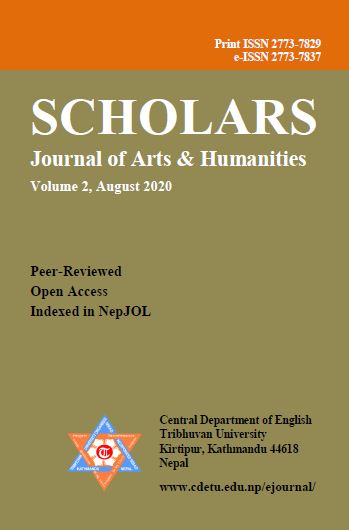Cultural Identity of the First-Generation Immigrants in Tan’s The Bonesetter’s Daughter and Lahiri’s The Namesake
DOI:
https://doi.org/10.3126/sjah.v2i0.35013Keywords:
Immigrant, cultural identiy, being, becoming third spaceAbstract
This article examines the problematic cultural identity of the first-generation immigrants in Amy Tan’s The Bonesetter’s Daughter (2001) and Jhumpa Lahiri’s The Namesake (2003). The immigrant characters problematize their cultural identity by oscillating in the cultural spaces of their home country and the host country. They tend to adopt new cultural identity of their host country while sustaining the old one of their home country. As a result, they negotiate their cultural identity in the shared cultural space which Homi K Bhabha terms as the third space. While analyzing the third space of cultural encounter, I refer to homeland culture as the first and the host land culture as the second cultural space of immigrants. Negotiating in the third space of the diaspora, the immigrants embody fluid and dynamic cultural identities that go beyond the binary of the host and home country. The process of the cultural negotiation of the immigrants is analyzed in the critical frame of Stuart Hall’s cultural identity and Homi Bhabha’s third space in this article.
Downloads
Downloads
Published
How to Cite
Issue
Section
License
© Central Department of English, Tribhuvan University and Authors




